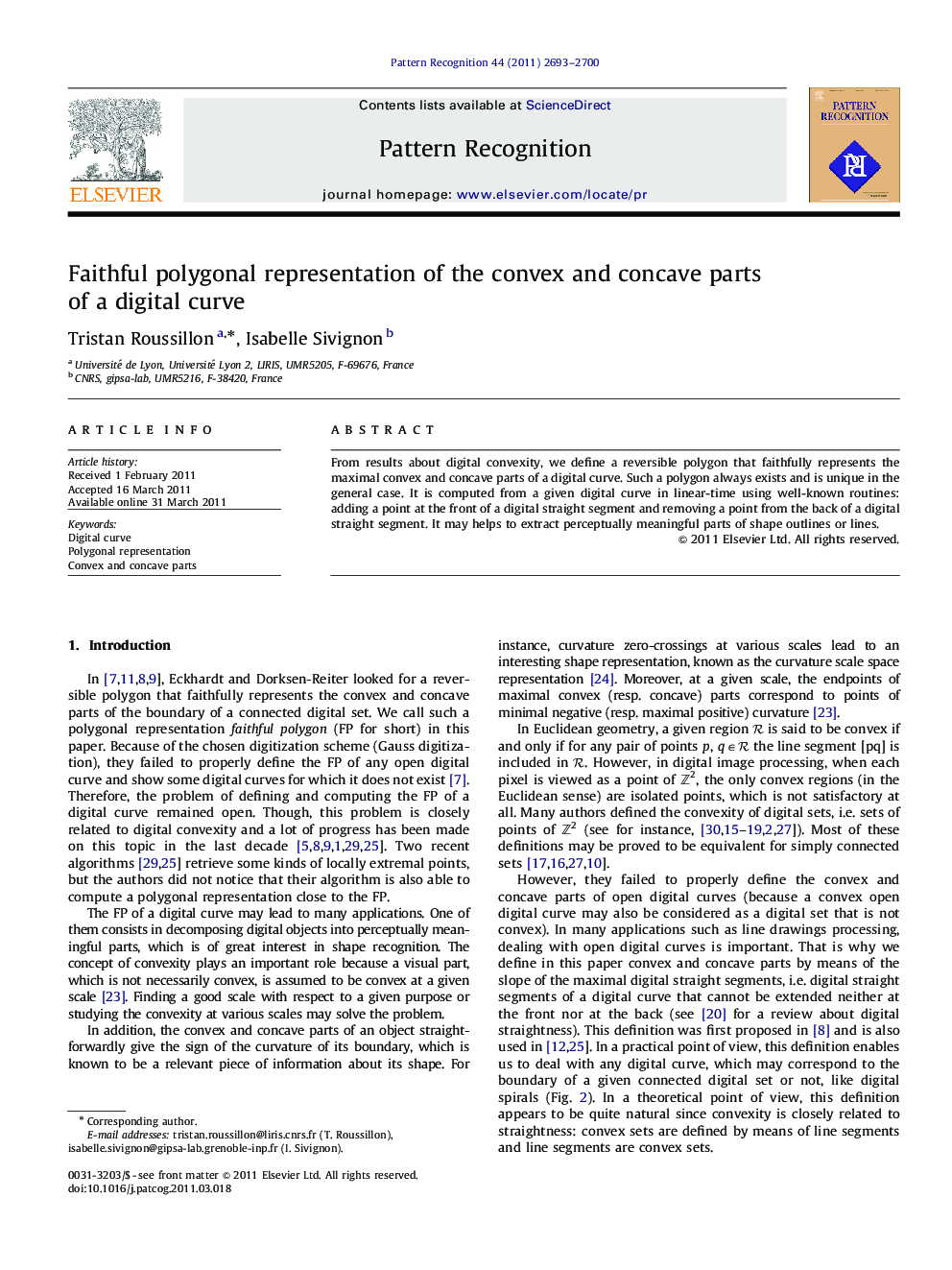| Article ID | Journal | Published Year | Pages | File Type |
|---|---|---|---|---|
| 533520 | Pattern Recognition | 2011 | 8 Pages |
From results about digital convexity, we define a reversible polygon that faithfully represents the maximal convex and concave parts of a digital curve. Such a polygon always exists and is unique in the general case. It is computed from a given digital curve in linear-time using well-known routines: adding a point at the front of a digital straight segment and removing a point from the back of a digital straight segment. It may helps to extract perceptually meaningful parts of shape outlines or lines.
► Convex and concave parts are defined from the slopes of maximal digital segments. ► Definition of the smallest digital pattern required to decide convexity locally. ► Online and linear-in-time algorithm to compute a faithful polygonal representation.
